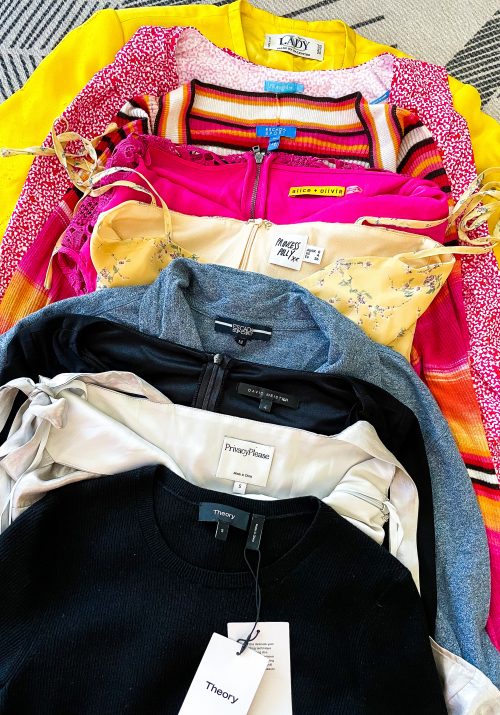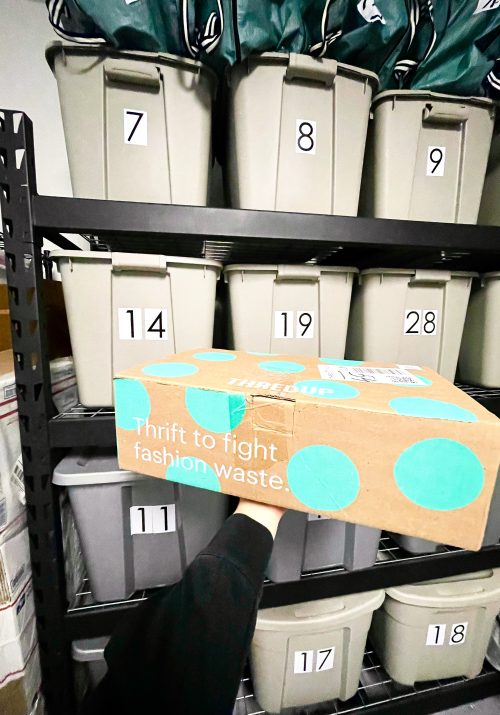
I have been reselling over 8 years now; I started out as a hobby seller, transitioned into a part-time seller for 3.5 years, and in September 2020, I because a full-time reseller. Within that timespan, my inventory has varied drastically depending on what reselling phase I was in. When I was a hobby seller, my inventory never grew beyond 100 items. After transitioning into part-time selling, my inventory slowly grew over the years to 700+ items. Finally, as a full-time reseller, my inventory has reached over 1000+ items. Growing my inventory was not instantaneous and took a lot of time, patience, and capital to make it happen. Today, I wanted to share with you my thoughts on building inventory as an experienced reseller and how I would build my inventory if I was starting out as a new reseller today.
When you are new to the world of reselling, it can all seem overwhelming at times, especially when it comes to building inventory. I have been reselling for over 8+ years now and I can tell you from experience that building your inventory is something that takes both time and patience to successfully do. On social media, I see messaging to newer resellers stating that they should “try to build their inventory as quickly as they can”. Personally, I think that this advice is setting up newer resellers for failture.
Why??
(1) You don’t really know your customer and niche yet so it is encouraging resellers to buy just to buy
(2) It is encouraging resellers to put themselves into debt in order to build inventory early on
(3) It is teaching resellers that the amount of items that they are selling is more important than the quality of the items that they are selling
So What Should Resellers Do Instead??
Instead, resellers should realize:
It doesn’t matter whether you have 100 items of 1000 items in your inventory….
In order to make consistent sales, you need to be consistent in your efforts, price items fairly, and sell desirable items within your niche. Sure, having a larger closet increases the probability of making more sales but it is not necessary to make consistent sales.
It takes time to learn both your customer and your niche…
Customers vary between reselling platforms and also within reselling apps. It takes time to figure out your reselling identity and to supply your closet with pieces that your particular audience is looking for. This is not instantaneous and will require some trial and error.
Building inventory requires a lot of capital…
If you are someone who would like to eventually build up your inventory, know that it is going to require quite a bit of capital to make that happen. Over the years, I have re-invested a lot of my profits back into the business in order to have the 1000+ items that I have in my inventory now. Building inventory is not cheap!
How to Build Inventory
At the Very Beginning….
(1) Start Small– I would suggest starting out with items from your own closet/home and free items from friends and family. This will allow you to start with $0 in cost of goods and will allow you to reinvest your profits into new inventory.
(2) Learn Your Customers- Each reselling platform has their own customer base. For example, the demographic that utilizes Poshmark can be different from the demographic that utilizes Tradesy. Once you are familiar with this, it can be easier to figure out which reselling platform(s) will be best for you.
(3) Establish Your Reselling Identity- Each reseller has their own reselling identity. This includes everything from the items that they sell to how their stylize their photos to how they brand themselves. Knowing your reselling identity can be extremely helpful to you as it can help to guide you in future purchasing decisions.
(4) Don’t Be Afraid to Experiment- Especially in the early stages of reselling, you will do a lot of trial-and-error. You will learn what works and what doesn’t for you and your business. Don’t be afraid to try selling different brands and categories. Eventually, you will figure out what items made you happy to sell (and are also profitable).
Buying New Inventory…
When it comes to buying inventory for your business, you can explore different options such as thrift/consignment stores, retail stores, online stores, and pallets. Personally, I would recommend on focusing on 2 things early on:
(1) Quality and Sellability of Inventory
(2) Cost of Goods
At this point, more resellers don’t have a lot of money to invest into their inventory. Most of the money that they do have to invest is coming from the profits of items that they have sold previously. Since these funds are limited, it is important o make strategic and informed purchasing decisions. One strategy that I suggest is:
Focus on selling a few highly desirable items (which don’t necessarily need to be brand focused) that will result in quick, profitable sales.
Why?– Because the quicker the sale, the quicker that you can re-invest the money back into new inventory. When you are starting out, you don’t want to get your money tied into inventory that isn’t moving.
[Note: To find highly desirable items, be sure to do your research and familiarize yourself with consumer trends.]
In my opinion, early on, the focus should be on the speed of your sale combined with the sellability and quality of the items that you are selling. Remember, this can always change later on…
Now that We Made a Profit….Let’s Talk About Re-Investing & Tracking Your Spending
Building an Inventory Fund
This is something that I actually used in my business when I was building my inventory and still use now. This allows me to set money aside that would be used specifically for inventory.
How to Do This: Let’s say that I sell an item for $25 on Poshmark. After Poshmark deducts their fees, I would receive $20 and assuming my cost of goods was $5, I would be left with a $15 profit.
I would take the $5 from my cost of goods and reinvest it into more inventory by adding it to my inventory fund until I am ready to spend it. Then, I would look at my profits and add a percentage of that money to my inventory fund. This gives me more capital to reinvest back into the business.
*This is a system that you can continue as long or as short as you want it to. However, if you are just looking to maintain your inventory, you can just reinvest your cost of goods and not deduct from your profits.
Track Your Monthly Sales
Specifically, you want to track how many items you are typically selling on a monthly basis. This can provide you with an idea of how many items you need to buy each month to maintain versus grow your business.
In Order to Help with Long Term Success, We Need to Look at Business Cycles
After you have built a good inventory find and have had some practice buying and selling inventory, there comes a point where you can plan for your business’ growth moving forward. When it comes to running a reselling business, there are periods of growth and periods of maintenance.
During Periods of Growth, you typically are spending more money which is in turn affecting your profits. (I.e. Buying more inventory to grow the size of your business.)
During Periods of Maintenance, you are maximizing on your profits until you are ready to enter another period of growth. (I.e. Keeping your inventory supply steady to maintain monthly sales.)
Your individual and business goals will determine what your next steps are from here. Over time, you can experiment with other niches and categories, brands, and get really creative with the items that you are selling.
If you don’t already, be sure to check out my Instagram for more Reselling Tips at @ RecycledRosesGuide (Click HERE) and my Facebook page HERE.
You can instantly shop all of my looks by following me on the LIKEtoKNOW.it shopping app HERE.
To get email notifications for my next blog post and to receive my monthly Reseller Recap (with freebies), sign up for my emails below:
Baci,



